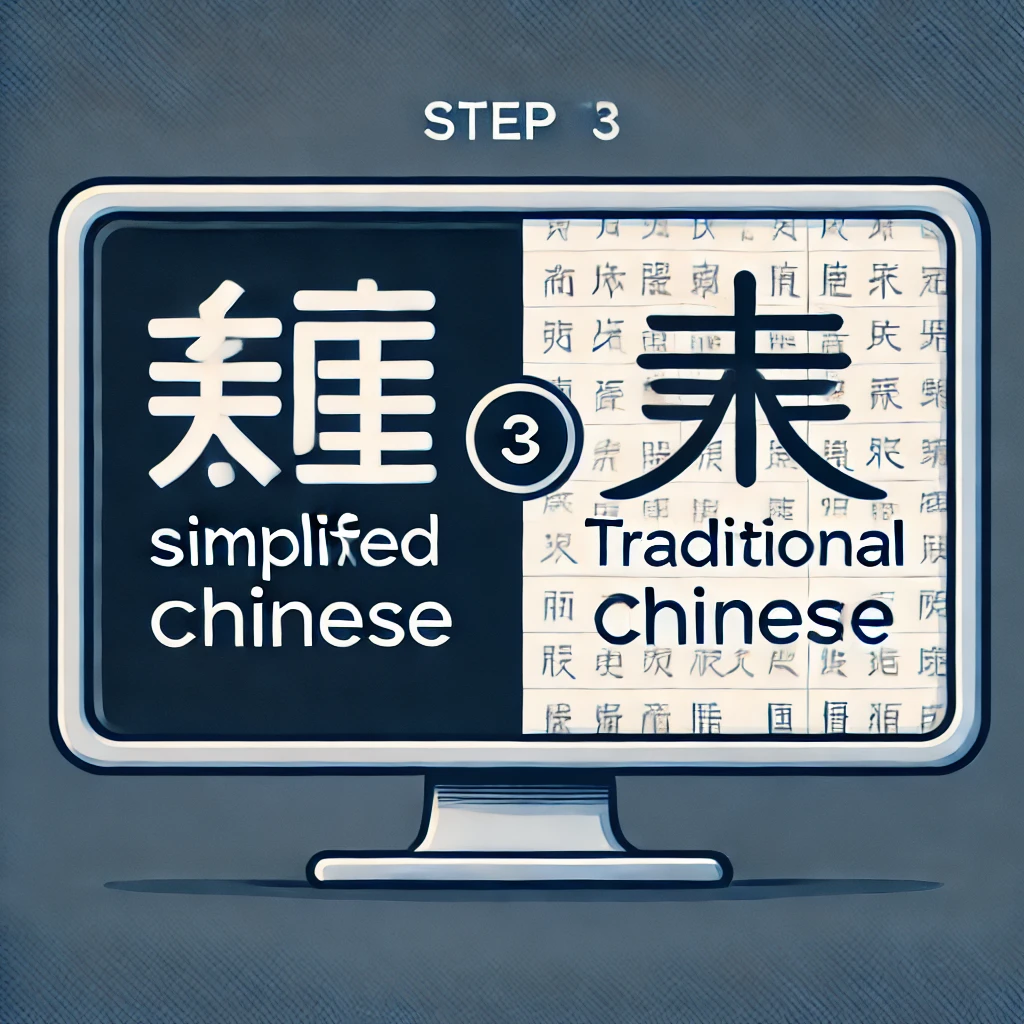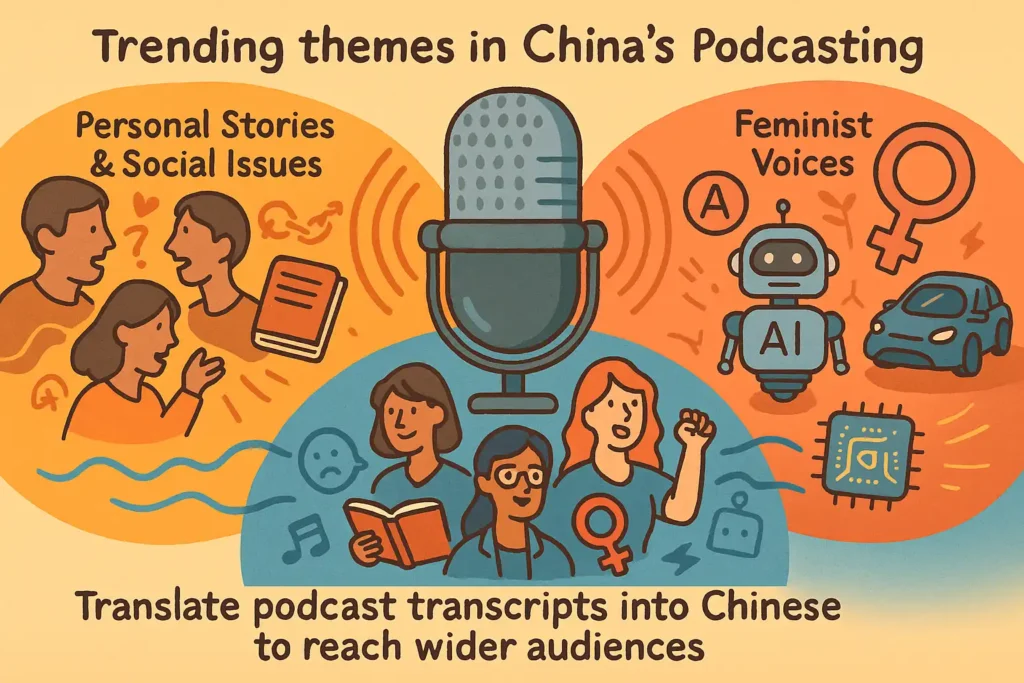“Translate Podcast episodes into Chinese with this step-by-step guide to transcription, translation, formatting, and publishing—making your content more accessible to a wider audience.”
How to get started with translating podcast transcripts into Chinese
Step 1: Transcribe in English: Start by transcribing your episodes into English. This ensures you have a clean source before you translate podcast content into Chinese. Avoid relying solely on automated services, as human transcriptionists can ensure higher accuracy.

Step 2: Analyze and Quote: Share your English transcripts with a service provider for word count analysis and translation quotes. Provide context, glossaries, or style guides to improve the translation quality

Step 3: Choose Written Chinese Format: Specify whether you need Simplified Chinese (used in Mainland China) or Traditional Chinese. This choice depends on your target audience. Choosing the right script is critical when you translate podcast transcripts for specific regions.

Step 4: Plan Turnaround Times: Collaborate with your project manager to align your podcast publishing schedule with transcription and translation timelines.
Do you know?
🎙️ Trending Themes in China’s Podcasting Scene

To reach Chinese audiences with your Translate Podcast efforts, consider publishing on leading local platforms: Ximalaya, the biggest in the market; Lizhi, favored by younger users; Qingting, known for talk-radio formats; and the niche, community-strong Xiaoyuzhou app.
China’s podcast market is evolving rapidly, with creators exploring everything from personal struggles to cutting-edge innovation. Here are three major themes shaping the scene:
🌏 Personal Stories & Social Issues
Grassroots podcasters are winning large audiences by diving into espionage, history, depression, and feminism—often pushing the boundaries of social conversation while staying relevant and relatable.
✊ Feminist Voices Gaining Ground
Gen Z listeners are fueling the rise of feminist podcasts. Programs highlight topics like sexual harassment, women’s rights, and gender equality, expanding from just a handful of shows to a thriving community.
💡 Tech & Innovation Deep Dives
Tech-focused podcasts are booming as China positions itself as a global leader in AI, robotics, EVs, and semiconductors. These shows give listeners behind-the-scenes insights into the country’s most exciting innovations.
In China, many podcasts feature paid subscriptions focused on education and self-development, while free podcasts often lean towards entertainment. Popular categories include Chinese history, economy, health, finance, family, self-growth, and culture.
The podcast market in China vs. the U.S.
The Chinese podcast industry, valued at $7.3 billion in 2018, is 23 times larger than the U.S. market ($314 million), driven by widely accepted paid subscription models. Podcasters with 250,000 listeners in China can earn up to $8 million annually, showcasing the lucrative potential of subscription-based content in this market.
Why invest in translating podcast transcripts into Chinese?
- Podcasts involve open discussions and relevant topics that your followers find interesting. While podcasts are in audio format, transcribing and translating them into Chinese helps your listeners better understand your content.
- Transcripts also provide a guide for listeners, allowing them to browse specific topics using timestamps and revisit discussions in detail. A Chinese transcription service offers a word-for-word transcription of each episode, improving accessibility for a broader audience.
When you translate podcast content into Chinese, you also unlock opportunities in China’s fast-growing digital audio platforms like Ximalaya FM and Lizhi. Unlike Spotify or Apple Podcasts, these platforms integrate social features such as comments, sharing, and tipping, which thrive on text-based interaction. Having a localized transcript in Chinese makes your episodes easier to promote across these platforms, opening the door to sponsorships, advertising, and a more engaged listener base.
How does this benefit you?
- Increased Website Traffic: Podcast transcripts help search engines index your site, making your content more discoverable for non-English speakers.
- Backlink Opportunities: Transcripts make it easier for listeners to reference and link back to specific discussions.
- Better Engagement: Timestamps in transcripts allow users to cite specific sections of your episode and share them with others.
- Credibility and Authority: High-quality transcripts build trust, showcasing your commitment to providing accessible, valuable content.
When you translate podcast material into Chinese, you also gain SEO advantages. Localized transcripts improve keyword visibility on Baidu and other Chinese search engines, helping new audiences find your content more easily.
Your next steps to translate Podcast Transcripts in Chinese
Tapping into multilingual opportunities can be overwhelming, but starting small is a great approach. Focus on the top three languages and markets where you aim to grow your audience.
The Chinese market offers substantial opportunities for podcasters in e-learning or other niches. Begin with a few translated episodes and evaluate the response.
Ready to take the next step? Send over your English transcription, and we’ll help you craft a sustainable multilingual strategy. Fill out the form below to get started on your project. Contact us today and let’s bring your podcast to Chinese listeners with professional translation and localization support.
3 Reasons Why Google Translate Fails for Chinese – And What You Can Do Instead
